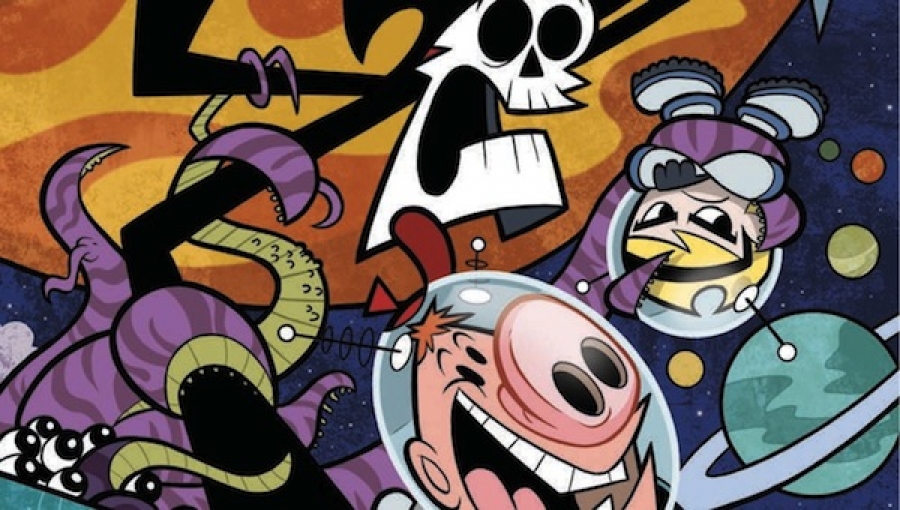IDW’s Super Secret Crisis War: The Grim Adventures of Billy and Mandy is a “one off” (i.e., stand alone) Grim Adventures story about a war-minded robot who crash lands near Billy and Mandy’s school. Despite the robot’s continual demands for conflict and violence, Billy embarks on a manic quest to befriend the stranger. The child introduces the robot to video games and swing sets, but time and time again the visitor’s primary directive leads him to stray from these pastoral pleasures. In the end, and with the help of a therapist, all is resolved — or mostly resolved.
The art styling is, of course, true to the established series, which now exists in multiple media formats. For the uninitiated, the work can be described as a collection of muted primary colors, which are used to render a relatively limited number of major subjects, which are positioned in various but rarely imaginative poses throughout the book.
The dialogue is flat, despite the manic punctuation. Arguments are presented as if they are jokes, and there is very little wordplay, though it is the case that the robot gets off one or two good lines — but those lines make cultural references that I assume the book’s target audience will overlook.
There is a great deal of campy baggage around the actual narrative, several pages of all-too-vibrant advertisements followed by cartoonish introductions for the major artists and writers who contributed to this effort. Letters and comments from readers are included, which indicates that there is something like an energized audience for this kind of story in this kind of format.
Clearly, this is a work by and for fans, and while it’s rarely polite to subject taste to critical scrutiny, this book does raise questions about its own reason for being. For example, who are the people who would enjoy this? Clearly, they are out there, and I have every expectation that fans will find this to be an enjoyable work, but primarily only because they are fans. My question, though, is — how did they become fans in the first place?
The work as a whole can be described as an invitation to mania — not the kind of mania that has to be treated by a professional — but the kind of mania that elevates adolescents into the experience of something like selfless rapture. To like this — to really like this — you’d need to recognize that nearly everything in the story — the art, the dialogue, the plot, the resolution — comes across as essentially uninspired, and somehow, despite that same recognition, nevertheless feel compelled to celebrate the work as an exceptional entertainment. There can be no middle ground with this kind of document: you love it, or you do not. To quote Yoda, there is no try.
But, all of that does not answer my basic question — how do you become a fan of this kind of work? Please let me know in the comments below.

